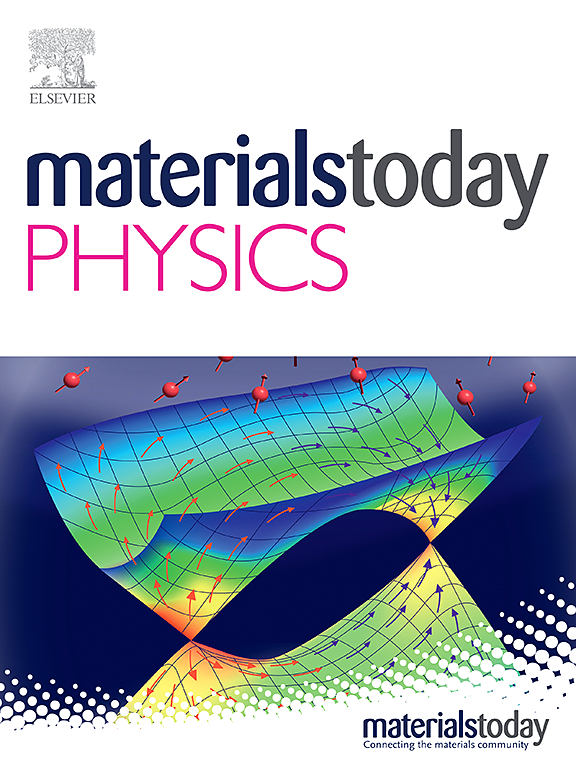Study on field-induced sign reversal of planar Hall effect in intrinsic ferromagnetic topological insulator MnBi8Te13
IF 10
2区 材料科学
Q1 MATERIALS SCIENCE, MULTIDISCIPLINARY
引用次数: 0
Abstract
The intrinsic ferromagnetic topological insulators MnBi8Te13 provide a promising material platform for the realization of diverse exotic topological quantum states, such as quantum anomalous Hall effect and axion-insulator state. The planar Hall effect (PHE) has significant advantages for the characterization of intrinsic magnetic properties in magnetic materials and applications to spintronic devices, due to its low thermal drift and high signal-to-noise ratio. In this work, the PHE of single crystal intrinsic ferromagnetic topological insulator MnBi8Te13 is studied in detail for the first time. Consistent with most PHE studies, the resulting PHE data demonstrate peaks and valleys near nπ/4 (n = 1, 2, 3, and 4) indicating a period of π. Interestingly, we observed a field-induced sign reversal of the PHE. Anisotropic magnetoresistance (AMR) measurements show that the sign reversal of resistivity can be attributed to the different dependence of resistivity on the magnetic field when the field is parallel and perpendicular to the current direction. Further analysis of the PHE and AMR data has demonstrated that the anisotropic magnetoresistance, rather than the chiral anomaly, plays a dominant role in the PHE of MnBi8Te13. These results advance the understanding of the planar Hall effect and provide a candidate material for field-controlled magnetic sensor devices.
本征铁磁拓扑绝缘子MnBi8Te13中平面霍尔效应的场致符号反转研究
本构铁磁拓扑绝缘子MnBi8Te13为实现量子反常霍尔效应和轴子绝缘子态等多种奇异拓扑量子态提供了一个有前景的材料平台。平面霍尔效应由于其低热漂和高信噪比,在磁性材料的本征磁性表征和自旋电子器件的应用中具有显著的优势。本文首次对单晶本征铁磁拓扑绝缘子MnBi8Te13的PHE进行了详细的研究。与大多数PHE研究一致,所得PHE数据在nπ / 4附近显示峰和谷(n= 1,2,3和4),表明周期为π。有趣的是,我们观察到磁场诱导的PHE信号逆转。各向异性磁阻(AMR)测量表明,电阻率的符号反转可以归因于磁场平行和垂直于电流方向时电阻率对磁场的不同依赖。进一步分析PHE和AMR数据表明,各向异性磁电阻在MnBi8Te13的PHE中起主导作用,而不是手性异常。这些结果促进了对平面霍尔效应的理解,并为场控磁传感器器件提供了候选材料。
本文章由计算机程序翻译,如有差异,请以英文原文为准。
求助全文
约1分钟内获得全文
求助全文
来源期刊

Materials Today Physics
Materials Science-General Materials Science
CiteScore
14.00
自引率
7.80%
发文量
284
审稿时长
15 days
期刊介绍:
Materials Today Physics is a multi-disciplinary journal focused on the physics of materials, encompassing both the physical properties and materials synthesis. Operating at the interface of physics and materials science, this journal covers one of the largest and most dynamic fields within physical science. The forefront research in materials physics is driving advancements in new materials, uncovering new physics, and fostering novel applications at an unprecedented pace.
 求助内容:
求助内容: 应助结果提醒方式:
应助结果提醒方式:


